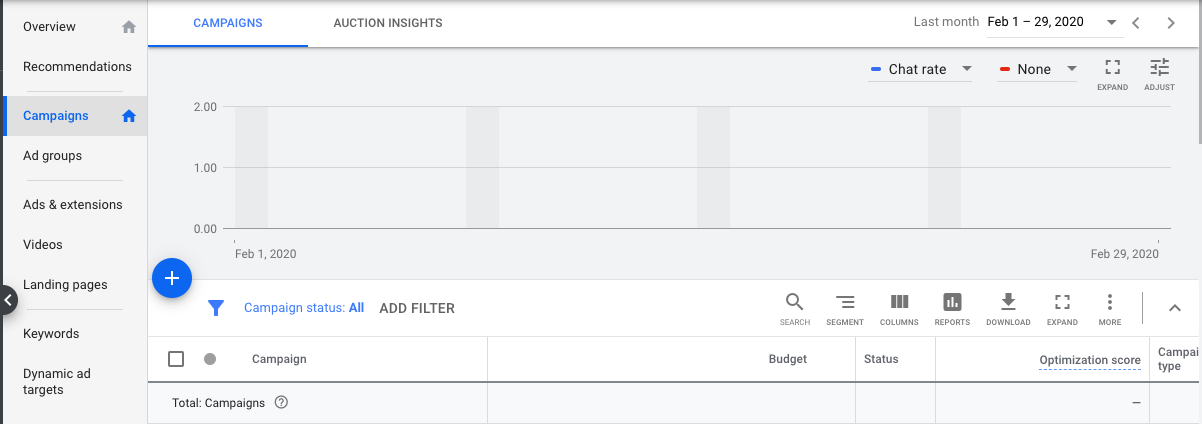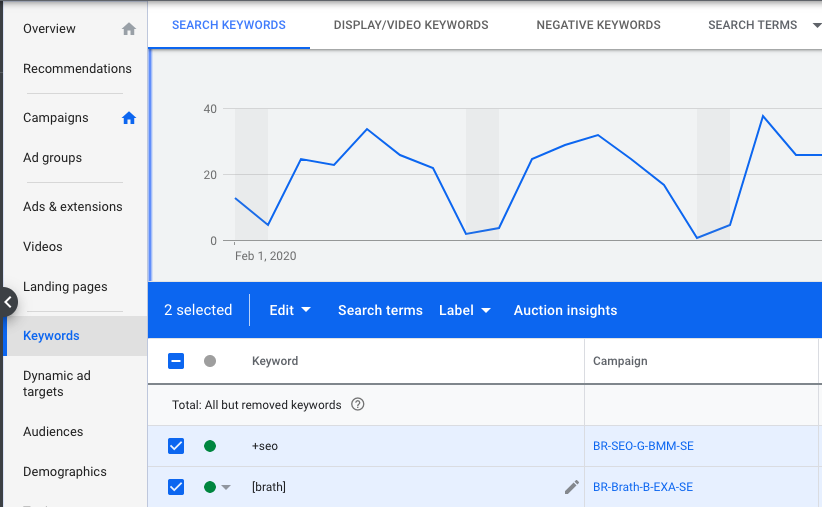
Something that is always interesting to keep track of is what your competitors are up to. It’s a well-established strategy to monitor what other players are doing, and hopefully, there’s both the will and the conditions to do it even better. Google Ads is no exception. Here, we go through how you can monitor the competition in paid search.
“Our competitor shows up before us on this search”
We often get questions about why one or more competitors’ ads appear in higher positions in the search results. It’s probably a common method to occasionally run some test searches to see how you rank compared to your competitors – but it’s not a very good idea. Of course, it can be interesting to know, and you should check it periodically.
However, there are better ways than manually searching on Google. These days, Google uses advanced, self-learning algorithms whose job is to determine which ad is most relevant to you at that exact moment. Often, they’re quite logical. You’ve probably visited your own site many times without making any purchases. If you were Google’s algorithm, how likely would you think it is that your searches would lead to a conversion? Probably quite low.
Individual test searches rarely provide any valuable insights and also generate ad impressions without clicks, which lowers the average click-through rate. It’s far better to use the Auction Insights report.
Auctions Insights i Google Ads
The Auction Insights report, referred to below as the auction report, is a table with statistics about, among other things, your share of ad impressions in search compared to your competitors. The report can be created for one or several selected keywords, ad groups, campaigns, or the entire account.
You can also segment the results by time or device to find out whether competition differs, for example, for mobile traffic or certain days of the week. The report consists of six key metrics, which I’ll list here in Swedish: Exponeringsandel, överlappningsfrekvens, frekvens för position ovanför, frekvens för position högst upp, frekvens för absolut topposition and vinnande andel.
These metrics are also excellent replacements for the now-discontinued “average position.” Below, we’ll go through each of them briefly one by one.
Impression Share
Impression Share indicates the number of ad impressions you received divided by the number of potential ad impressions. Potential ad impressions refer to all auctions for the keywords included in the report. Quality Score, bids, targeting, and approval status together determine the overall impression share. In the Auction Insights report, you can also see your competitors’ impression share, but only for the auctions in which you also participated.
Overlap Rate
The overlap rate shows how often a competitor’s ad appeared at the same time as yours. If another advertiser’s overlap rate is 20%, it means their ad was shown alongside yours one out of five times. In other words, your own overlap rate will not be displayed in the auction report.
Position Above Rate
The position above rate indicates the percentage of searches where a competitor’s ad appeared above your own when both of your ads were shown at the same time. For example, if another advertiser’s “position above rate” is 10%, it means their ad was displayed above yours one out of ten times. Unfortunately, this metric is not available for Google Shopping.
Top of Page Rate
The top of page rate indicates exactly what the name suggests: the percentage of times your ad, or a competitor’s ad, appeared at the top of the page. “Top of the page” means above the organic search results, regardless of how many positions that includes. This metric is also not available for Google Shopping.
Absolute Top of Page Rate
You guessed it: the absolute top of page rate indicates how often your ad, or a competitor’s ad, appeared in the very first position. This is an important metric to take a closer look at for your most critical campaigns or keywords, such as your own brand.
Having a 100% impression share here is of course positive, but take it a step further and ensure that your absolute top of page rate is also high. A good strategy to make sure it’s always as high as possible is to use the “Target Impression Share” bidding strategy.
Outranking Share
Outranking share indicates how many times your ad (or another advertiser’s ad) ranked higher than another participant in the auction, as well as the number of times the ads were shown when other advertisers’ ads were not shown at all.
Where can you find the Auction Insights report?
You’ll find the report in the top menu bar of your Ads account when you have either a campaign or an ad group selected.

För sökord å andra sidan måste du markera ett eller flera sökord som du vill ta fram rapporten för. När du har markerat sökorden dyker rapporten upp i raden ovan, se bild.

Detta tar vi med oss om konkurrensövervakning:
- Undvik att göra testsökningar, se till helheten istället för en enstaka sökning.
- Försäkra att viktiga sökord eller kampanjer inte bara har hög exponeringsandel utan även starka positioner.
- Segmentera datan i auktionsrapporten för att se om något sticker ut vissa tider eller enheter.
- Om detta är viktigt för dig och din verksamhet så be er ansvarige att lägga till detta i den regelbundna rapporteringen.
Lycka till med konkurrensanalysen!
